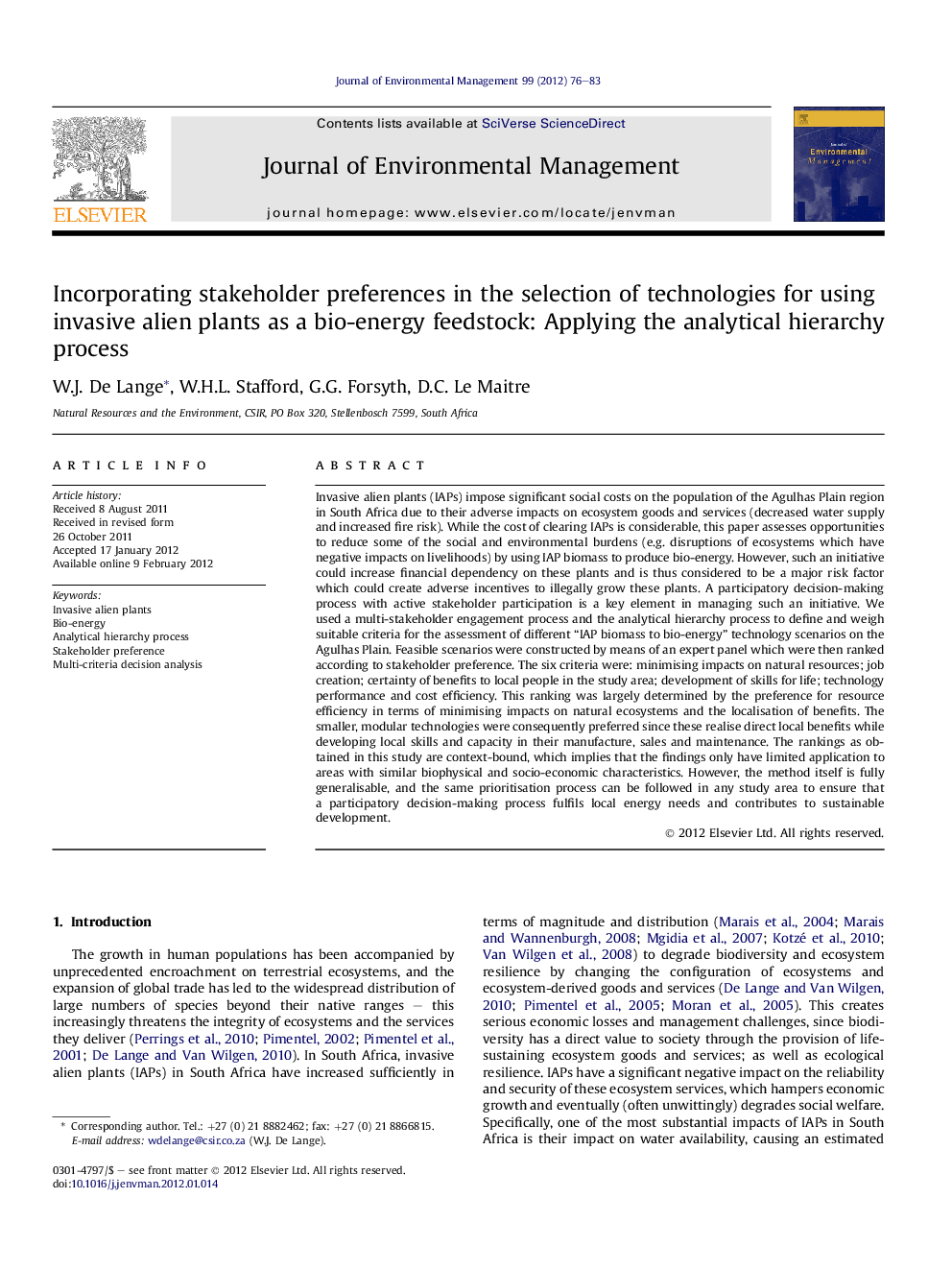| Article ID | Journal | Published Year | Pages | File Type |
|---|---|---|---|---|
| 1056906 | Journal of Environmental Management | 2012 | 8 Pages |
Invasive alien plants (IAPs) impose significant social costs on the population of the Agulhas Plain region in South Africa due to their adverse impacts on ecosystem goods and services (decreased water supply and increased fire risk). While the cost of clearing IAPs is considerable, this paper assesses opportunities to reduce some of the social and environmental burdens (e.g. disruptions of ecosystems which have negative impacts on livelihoods) by using IAP biomass to produce bio-energy. However, such an initiative could increase financial dependency on these plants and is thus considered to be a major risk factor which could create adverse incentives to illegally grow these plants. A participatory decision-making process with active stakeholder participation is a key element in managing such an initiative. We used a multi-stakeholder engagement process and the analytical hierarchy process to define and weigh suitable criteria for the assessment of different “IAP biomass to bio-energy” technology scenarios on the Agulhas Plain. Feasible scenarios were constructed by means of an expert panel which were then ranked according to stakeholder preference. The six criteria were: minimising impacts on natural resources; job creation; certainty of benefits to local people in the study area; development of skills for life; technology performance and cost efficiency. This ranking was largely determined by the preference for resource efficiency in terms of minimising impacts on natural ecosystems and the localisation of benefits. The smaller, modular technologies were consequently preferred since these realise direct local benefits while developing local skills and capacity in their manufacture, sales and maintenance. The rankings as obtained in this study are context-bound, which implies that the findings only have limited application to areas with similar biophysical and socio-economic characteristics. However, the method itself is fully generalisable, and the same prioritisation process can be followed in any study area to ensure that a participatory decision-making process fulfils local energy needs and contributes to sustainable development.
► We present five plausible scenarios to utilise invasive alien plants for bio-energy. ► The analytical hierarchy processes was used to determine a preference ordering. ► Preference towards environmental protection was observed. ► Financial viability was considered least important. ► Preference orderings are affected by criteria weights and not performance scores.
